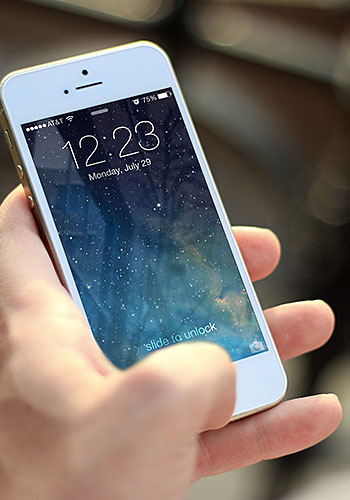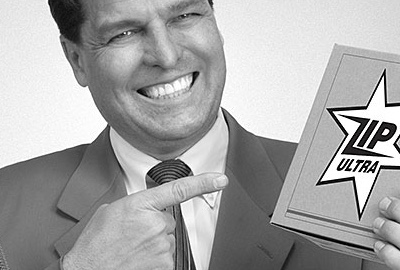



History of the Smartphone
- ArticlesandContent.com (CIRCA 2005)
- /
- Oct 8, 2021 (written 2005)
The history of modern smartphones can be traced back to a combination of 2 devices which includes the cell phone and the Personal Digital Assistant or PDA.
Before we had the smartphone, we had the cell phone. The history of cell phones began after the Second World War when companies AT &T and Bell labs figured out a way to transfer calls outside a home or an automobile. The term “cellular” phone was coined, because a call on a cell phone is transferred from one area or “cell” to another. During the history of cellular phones, progressive development was consistently slowed by the FCC, which would not grant new frequencies to those who were developing the product. Meanwhile, development of the first cell phone continued in spite of the FCC’s interference, as Bell Labs developed a phone that could be used in police cars. It was rather clunky and large compared to today’s sleek models, and could not be used outside a car. However, that was the state of the art in 1947, which was quite early in cell phone history.
Calling the Competition
Finally, in 1968, the FCC loosened its grip a bit and said it would grant more frequencies, if the technology of cell phones improved. AT & T and Bell labs proposed a system that would use small spaces with tall towers to make transmission more efficient and would ensure that excessive amounts of bandwidth were not used. The first actual phone in cell phone history used outside a car was developed by Dr. Martin Cooper of Motorola in 1973. He made a call in April of that year to his competitor, Joel Engel of Bell Labs. The phone was rather large and awkward compared to smaller cell phones today, but the history of the cellular phone is about improved efficiency and progress.
The first cellular service was offered in Chicago in 1977, although it was limited to only 2,000 people. However, this was a first in the history of cell phones, but it would be a decade until cell phone service would be available to the average consumer. Until then, phone companies developed their products and consumers dreamed. The same experiment with limited phone service was being tried in Tokyo in 1979.
Finally, in 1982…
Finally in 1982, many years after the invention of the first cell phone and the first commercial service was made available, it became available to the general public. By 1987, the demand for the cell phones was so great that the services were overloaded. Since then, the FCC has demanded from phone companies that they improve technology rather than asking for more bandwidth. Cell phone companies such as Motorola, Nokia, and AT &T have heeded the call with more efficient and attractive cell phones.
PDAs Put The Smart in Smartphone
The history of the personal digital assistant (PDA) actually begins in the mid 1980s. At that time, several devices that were part organizer, part small computer appeared on the market. Many were quite remarkable for their time. They had keyboards and screens. In the beginning, the keyboards were not set up QWERTY style and the black and white screens were very small. Most had the standard organizing features, such as calendars and date book functions. Some even had basic software; a few also had gaming capabilities. Even the best of them had very limited memory. Additional capacity and expanded functionality were available for some products via memory cards and expansion slots. The AgendA and the Sharp Wizard were widely used. The most popular machine, however, was probably the Psion Organiser II, which in its best year sold more than half a million units. No model broke through to the mass market though, and eventually their manufacturers ceased to produce or even support them.
Newton Makes History (again)
In 1992 the first true PDA was born when Apple introduced the Message Pad and its operating system (OS) Newton. In fact, the phrase “personal digital assistant” came into existence just to describe this nifty little piece of equipment. Over time Newton became synonymous with the device itself; so much so that today most people refer to this break through machine as the Apple Newton. It was developed by John Scully of Apple and was a handheld device that would store phone numbers, appointments and would send and receive messages. This device was to be the answer to the portable personal computers and would mean PDA history. However, 1993 was not meant to be the year of the PDA, and these devices were not able to deliver on the vision imagined by Scully. Sales were not so strong to begin with and dwindled until they became a distant memory.
However, it wasn’t long before a truly effective device brought progress to PDA history. Still, the Newton can be looked back upon as a truly noteworthy step forward in the effort to bring handheld computing to the masses. In subsequent years, handheld computers running on a Windows based system and advanced PDAs using the Palm OS would vault small computing devices into the mass market.
Rise of the Handheld Computer
While many devices are referred to as handheld computers, an actual handheld must conform to several specifications. The two most important features are: One, a handheld computer must run Microsoft Windows CE operating system. Two, it must be accompanied by a collection of software produced by an original equipment manufacturer (OEM). Other requirements relate to the keyboard, screen and the presence of certain types of memory and expansion ports. There are variants of the handheld which feature a flat screen writing surface rather than a keyboard; these fall into a class of computer referred to as tablets.
Handheld computers were introduced to the public in the mid 1990s. They are designed to offer the convenience of a personal computer in an easily transportable size. They can run many standard Microsoft applications. The most popular handheld was likely the Jornada, but it was discontinued in 2002. Handheld computers remain in a state of flux. Microsoft hasn’t released any programming for a standard handheld since 2000, preferring instead to concentrate on developing its mobile friendly lines and, to a lesser degree, pocket personal computers.
the Palm Pilot
The Palm Pilot was probably the best known of all the small computing devices at the time. Its correct name is actually Palm Connected Organizer (Palm for short), since the Pilot Pen Corporation successfully sued several years ago to keep Palm from using the name Pilot. The first incarnation of the Palm came onto the scene in 1996. Although a long way from the current Palm, the first machine benefited from many of its competitors missteps, especially in regard to size. The Palm truly fit into most palms or pockets. It didn’t take long for the function to match the form. Within short order the Palm came equipped with a backlit screen, an infrared (IR) port, and enhanced memory. The ability to synchronize the Palm with laptop and desktop computers as well as its hard drive capabilities when connected to a computer via a USB cable have greatly increased the popularity of the Palm. Like Microsoft, Palm has ventured into the mobile form platform. The use of Palm technology in the Treo 700W mobile phone has proven to be extremely successful.
Palm Computing founder Jeff Hawkins configured the first Palm OS. Since its inception, Palm OS has seen many dramatic and useful upgrades, including the introduction of new processors and support for a diverse set of expansion ports. Since Palm Computing was bought by Access in the fall of 2005, the Palm OS has undergone further and very fundamental improvements, including aligning itself with the Microsoft Windows Mobile OS for use in handheld phones. Recent modifications are also looking toward the use of Linux. Palm OS allows for a wide variety of applications that may be bundled by Palm OS licensees or even customized at the licensee’s request. By far, the most popular of the Palm OS applications is the Hot Sync feature. Through this application a user can automatically transfer information among a variety of computing and mobile devices.
The handheld computing device has traveled a long road of false starts and incremental changes to arrive at the sophisticated machines many of us carry today. Through trial and error, illuminating individual insight and natural market selection, the early personal digital assistant has evolved into several varieties of handheld computers, mobile phones, and Palm organizers. As is often the case with technology, improvements are now coming at a much more rapid pace. Without a doubt the gadgets the public clamors for today are mere shadows of the mechanisms that will be commonplace in only a few short years.
Jumping on the Bandwagon
Now many other companies have developed their own PDAs, and competition is getting fierce to make the PDA with the most features that are advanced and easy to use. Smart phones are being added to current devices and these portable phones should continue to advance the history of PDAs. As the technology improves, we will continue to see these devices with all kinds of features. Competition between companies leads to advanced technology as each major company tries to come up with the ultimate small device which will store, send, and process information quickly and accurately. Smart phones are advancing the technology and are raising expectations for what we look for in a PDA. Ultimately, ever major task we need will be right at our fingertips.





